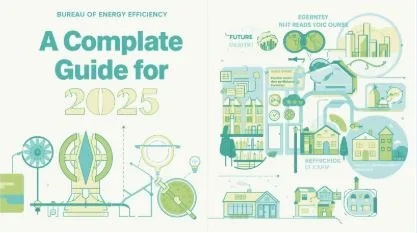How Plumbing Software Reduces Callback Jobs and Protects Profit Margins
In the plumbing industry, callback jobs are one of the most persistent threats to profitability. Whether caused by unclear job notes, incomplete diagnostics, miscommunication, or missing service history, callbacks force technicians to revisit the same property without generating additional revenue. As plumbing companies look for ways to improve operational reliability and protect their margins, many are adopting Workiz plumbing software to help reduce the likelihood of costly repeat visits through better documentation, scheduling accuracy, and communication workflows.
Callbacks may seem like a minor inconvenience at first, but their financial impact grows quickly. Every return trip ties up labor hours that could be spent on new billable jobs, increases fuel and vehicle wear costs, and can negatively affect customer satisfaction. Over time, a high callback rate can significantly erode profit margins, even for skilled and reputable plumbing service businesses.
This makes callback reduction not just a service quality issue, but a strategic business priority.
Why Callback Jobs Happen More Often Than Businesses Realize
Callbacks are often symptoms of process gaps, not technical skill problems. Common causes include:
- Missing or inaccurate job notes
- Technicians lacking visibility into past repair history
- Miscommunication between office staff and field technicians
- Unclear or rushed diagnostics during the initial visit
- Wrong parts ordered due to incomplete model or system data
- Customers reporting issues differently after the fact
When information lives across text messages, written notes, and phone conversations, there’s no reliable reference point. Technicians may arrive at the job site without key context, leading to incomplete or duplicated service efforts.
A structured digital workflow reduces this risk by making job details, photos, service history, and technician notes available to everyone, instantly.
How Plumbing Software Reduces Callbacks
Modern plumbing software reduces callback rates by ensuring that each step of the job lifecycle is documented, structured, and easy to review.
1. Centralized Job Notes and Service History
Every job should build on the last. With centralized customer records:
- Technicians can see what was previously fixed or inspected
- Office staff can reference past parts, models, and system types
- No one relies on memory or incomplete written notes
This alone significantly reduces repeated service errors.
2. Photo & Video Documentation
Before-and-after photos:
- Protect against customer disputes
- Help technicians confirm repairs
- Provide a clear reference for follow-up work
Documentation builds accountability and reduces ambiguity.
3. Accurate Scheduling & Technician Assignment
Assigning the right technician with the right skillset is critical. Software-driven scheduling considers:
- Technician expertise
- Workload balance
- Geographic routing
- Equipment and part requirements
This prevents rushed jobs and incomplete repairs.
4. Real-Time Field Communication
Technicians can communicate directly with office staff from the field, request approvals, and clarify instructions, before mistakes happen.
Safety and Compliance Support
Plumbing work directly affects water quality and environmental safety. According to the U.S. Environmental Protection Agency, proper installation and maintenance of plumbing systems is essential to preventing contamination and reducing household health risks.
By standardizing service procedures and keeping reliable work records, plumbing software helps businesses maintain compliance while ensuring consistent repair quality.
The Financial Impact of Reducing Callbacks
Image from Freepik
Reducing callback rates has a direct and measurable effect on profitability. Even a 5–10% reduction in repeat job visits can result in:
- More time availability for new paying customers
- Improved fuel and travel efficiency
- Reduced technician frustration and turnover
- Higher customer satisfaction and reviews
Callbacks drain capacity. Reducing them increases revenue without adding staff, vehicles, or additional marketing.
Put simply: fewer callbacks = higher margin per job.
Customer Experience and Reputation Protection
In service-based industries, reputation is everything.
Customers remember how they felt, not just what was repaired.
Plumbing software helps ensure customers:
- Receive clear communication and arrival updates
- Understand the repair process and pricing
- Get digital invoices and service summaries
- Feel confident the work was completed correctly the first time
This leads to stronger referrals and repeat business, the core of long-term growth.
Callback jobs have long been one of the most costly operational challenges in plumbing service work. They consume valuable technician hours, increase fuel and vehicle expenses, and cut deeply into already thin job margins. By using plumbing software to maintain detailed job notes, organize service history, standardize communication, and assign the right technicians to the right jobs, plumbing businesses can significantly reduce repeat visits and improve overall profitability.
For those interested in how the broader software industry continues to evolve and influence service operations, this recent report on Big News Network discussing market shifts in file sync and workflow software offers additional perspective on the technology trends shaping business tools today.






